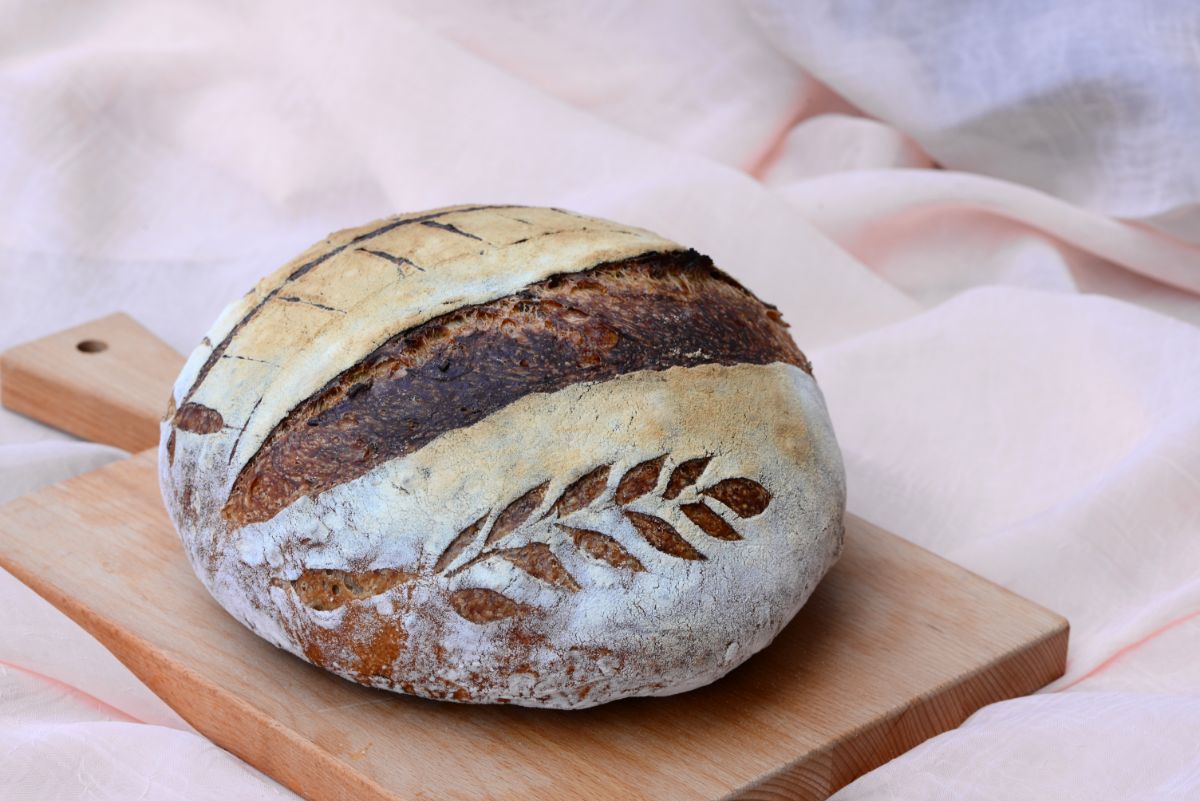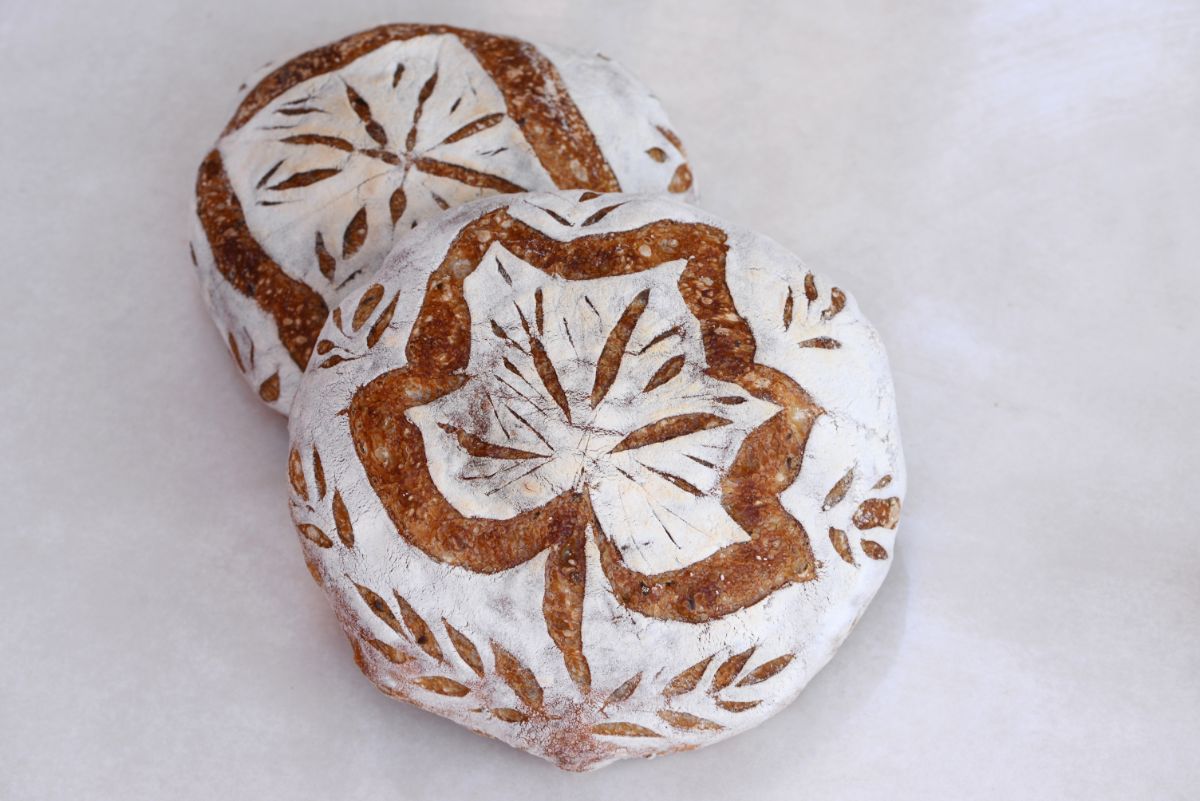
Scoring the bread means slashing the bread dough before baking it. We slash it with a sharp knife or lame to allow it to expand during baking. It looks rather straightforward, but it is not as you have to make precise cuts in a loaf of bread.
The main purpose of scoring the bread is to control the direction in which the bread will expand. You must do very cautious because one little mistake or an incorrect tear can lift or expand your bread in a totally erroneous way.
This strategy is also known as creating weak spots on the surface of the loaf.
Professional chefs use this strategy to prevent the loaf from bursting at weak spots during shaping. They intentionally create weak spots so that their loaves can get the shape they desire.
But the scoring of the bread isn’t only about controlling the direction.
You can’t just simply slash the bread and expect it to expand in exactly the same way you want. You have to be careful about the depth too. The depth of the cut also influences the ratio of expansion. Particularly, when it comes to the expansion and formation of the ear the depth and the angle of the score matter a lot.
Some experts use patterns as well. The patterns are used for two main reasons. First, you do that for creating pleasing visual patterns.
It happens on the surface of the loaf to make your bread unique and attractive. Second, patterns are used to identify the types of bread.
You can identify it at home rather comfortably but in restaurants it gets difficult. They have to work on different types of bread, therefore, they use scoring patterns to identify them.
For example, traditional patterns are used on baguette bread. It helps the bakers to identify the loaf as coming from his oven.
General Rules For Scoring

There are some general rules for scoring bread.
But before revealing those rules and methods, it is imperative to have some good scoring tools.
The most popular and common tool is ‘Lame’. This tool looks like a wand but has a thin sharp blade attached. The manufacturers have also used a small curve in the blade that allows the bakers to make a shallow cut in the bread dough.
If you already have this tool, it is great. Otherwise, you can easily get it online (see the links below). Some famous bread bakers lames are from Bread Bosses, Saint Germain, and Mure & Peyrot. (*Amazon Affiliate Links)
They are made of food-safe components and are widely used for commercial bakery use.
Other than that, they are kind of like a one-time investment. Once you buy the tool, all you need is to change the blade to make it effective again. The blades are replaceable and can be installed rather easily too.
Here are some general rules to remember for scoring the bread:
- The first rule to remember is it is challenging to score a warm dough. If you aren’t good at scoring, this is probably because you are trying your luck on a warm piece of dough. The best thing you can do is to put it in the fridge and let it be cold. The cold dough is firm. You can score it creatively and in any specific way you want. The difficult patterns you usually see on the bread are made on the cold dough.
- Ponder about the position of the dough too. How we score largely depends on its position. For instance, if the dough is placed horizontally in front of you, it would be good to score it at a cutaway angle. Conversely, the vertical position of the dough is effective for cutting inward. Of course, the position of the dough also relies on what you are trying to make. If you are planning to make baguette bread, you can cut it in both ways as it can be positioned both vertically and horizontally.
- The cuts should be firm, rapid, and smooth. Scoring the bread slowly will only devastate its whole appearance. We have already seen that professional bakers and chefs score the bread rather quickly since they perceive it is better to give it the correct shape. Furthermore, remember that the cuts should be ¼ to ½ inches deep only. It is possible to go more than that, depending on what you are making, but this is the average ratio you should opt for.
- There are some other minor details also you. Knowing them and practicing them over and over again will turn you into an expert in no time. For example, try to score across the bread axis. This is important and better than across the loaf. The cuts shouldn’t be totally horizontal or vertical. Give them a 30 to a 45-degree angle. This is more suitable for all kinds of bread. Also, don’t forget the basic principle; it is pertinent to shape and rise the dough before. Don’t try to change its shape or rise once the cuts are made.
- Scoring round loaf and the long loaf are also rather dissimilar. When it comes to scoring the round loaf, the knife should be held vertically. This is the more appropriate position for the round loaf. In other words, the blade should be at 90 degrees to the surface. On the other hand, if you are working on a long loaf, in a way, you are trying to create an ‘ear’. The angle of the blade should be 20-30 degrees. This will lift up the bread as the loaf expands.
Conclusion
So, let the knife do the work and don’t press it down hard on the dough.
People who still face issues in scoring the bread sharply and quickly, especially on the cold dough, can try spraying their blade with cooking oil. it starts cutting the dough easier.
In case you are trying to make patterns, draw them on paper first before trying them on the dough. This will facilitate you in scoring it perfectly.
